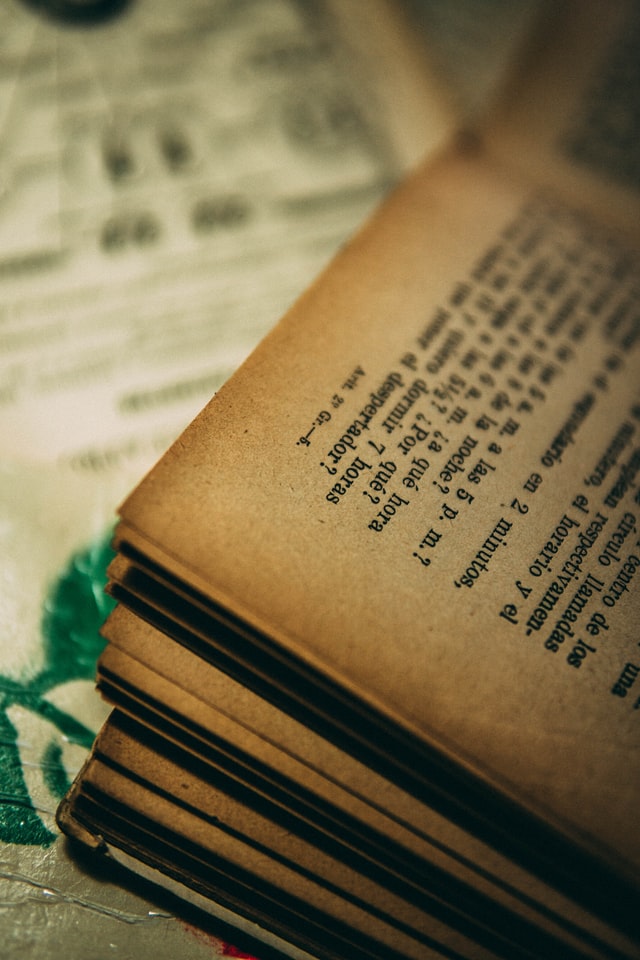Article: what is an article, characteristics, types of articles, how to write one and more
Contents
What is an article?
It is a type of text that is part of the set of subgenres of the didactic genre of literature, it consists of a piece of writing that can integrate a series of parts of a compendium, magazine, Internet page or newspaper intended for publication. However, the article, due to its structure, has been used mainly to refer to news articles that link the journalistic field directly.
The article is a text that can present the personal position of a person, whether a journalist, analyst, etc., or expose a particular content from a specific position in relation to a particular interest, context, etc.
Meaning of the subgenre article
The term article comes from the Latin articulus, which refers to “of the bones”, which is why translated, the article has been taken as a part of a whole, of a much broader structure, since in addition to participating in the media, we also talk about articles when we talk about components of other formats such as speeches, a law, etc.
Because of this, the term article has a great variety of uses that not only pertain to the literary field, but also to the field of law, commerce, etc.
Definition of the subgenre article
The article refers to several texts that are part of a single compendium or body, which is intended for publication in the media such as newspapers, magazines, Internet sites, etc.

Characteristics of the sub-genre article
Let’s see the most important characteristics of this didactic sub-genre of literature:
Organization: the article can start with the approach of a given situation, although this, most of the time will depend on the field in which the text is developed and the topic you want to address.
Author: the work of the author in the article is endowed with several activities, since it is not only a matter of exposing information and expressing his interpretation openly, but also, in some cases, he can also make judgments that must be argued later, either for or against the content. This characteristic makes the article a text close to the argumentative exposition in which the author expresses his opinion.
Length: actually, the length of an article can vary easily, this will depend on the content you want to include, the sources, points of view and other elements you want to develop in the article. It can be from one to several written pages that are subsequently published in the media such as Internet sites, newspapers, magazines, etc.
Parts of the article subgenre
The content of the article can be divided into a series of parts that make up the structure based on the format in which it is published. It is organized into the following parts:
Introduction
It usually consists of a few paragraphs. This first part is intended to catch the reader’s attention, to present a partial overview of the text that will appear later, so that it should include the central theme or problem on which the rest of the text will be developed.
Thesis
It consists of the central idea that the author affirms in relation to the topic that will be described, so it will present a series of arguments in its defense that must be based on sources and references of authority and importance. As for following the structure, the thesis may not appear at the beginning of the text, but may be presented right after the arguments. In other words, the thesis is the idea that summarizes the opinion of the author of the article.
Development and arguments
Although it is also known as the method, it consists of the central part of the article in which a series of points or issues are reviewed that gradually determine the thesis, that is, the arguments from a research design that must be examined in depth.
The presentation of the arguments includes both those in favor of and those against the central thesis of the article.
Conclusion
This part can be either a central conclusion or a closing with a personal opinion. Since a thesis has been presented, it is necessary to consolidate a conclusion that closes this main idea and that has defended it, for this a series of final remarks can be made to determine the validity of the statement within the thesis.
Research articles, as well as other types of articles, include a bibliography section in which all the sources that were used for the research and on which many of the verification ideas presented throughout the article are based are highlighted.
Types of the article subgenre
According to the field in which it is developed, in particular, the article may appear in different forms:
Academic article
Refers to a type of text that, although intended for publication, instead of containing an opinion and being published in the mass media, focuses on the academic community to which it belongs. In addition, the content of the scholarly article often includes research that has been done in a particular field. This type of article is also known as a research article.
Opinion article
As its name suggests, it is a type of text whose content is based on the author’s opinion or point of view. It is often a type of article present in the journalistic field in which the author requires intellectual elements to carry out a reflection and analysis in relation to a topic, a conflict or a news item of interest within society. This type of article seeks to expose the author’s personal perspective and is even a source for the generation of debates.
Nowadays, it is one of the most important types of articles, since they have the power to influence public opinion, in addition to including issues of social importance.
Article in journalism
It is a type of article that focuses on this media. It is known as article to each of the texts that are part of a publication within an article in which a news item is exposed, presented or narrated, which can be of different nature.
Article in law
It is a type of text that is developed within the legal field, so that the article can be the laws, rules and regulations written in certain compendium of texts. Each of them, in this case, will be numbered.
Grammatical article
Although it differs too much from the article as a text, it is one of the most important elements of grammar within literature. In this case, the article refers to a word that makes it possible to identify the gender or number of a noun, depending on whether it is determinate or indeterminate. In this sense, the definite article specifies gender and number, such as: la, las, el, los. The indeterminate article provides specific information applied to the noun, such as: una, unas.

How to write an article?
Now, taking into account the above and the type of approach to which the article you are going to write is designed, take into account the following points to develop it and give it the direction you require according to your particular needs.
Formulation of the idea and the topic
To begin with, it is necessary to have an established idea on which we are going to develop our article. If it is free choice, for example, you can start by researching what are the current topics of interest if you want to address a moving audience, although of course, you can also refer to a topic of your particular interest, as you will surely also find an audience for this content.
Evaluate the content of the media, especially the local media, and contrast the topics that generate controversy with those that are of greater interest to you.
Start the research
According to the topic you have chosen, the in-depth research on the subject will follow. To do so, you can resort to a wide variety of sources of information, such as magazines, publications, books, documents and archives, interviews, documentaries, among many others. Ideally, you should go to reliable sources of information that will provide you with quality information for your article.
You can even find many other texts with topics related to the one you are writing about, so you can evaluate their background and conclusions, scope and impact as a point of reference. Remember that each of them should be mentioned in the bibliography section, if applicable.
Identify your thesis, your opinion
As we have mentioned, the thesis summarizes the author’s opinion and is the core of the article, since the arguments that strengthen this main idea and prove its veracity are woven into it. It is clear that a single topic can cover a large number of elements that, in the article, can be limited, so it is necessary to work as much as possible on one of them in order to develop the whole argumentative space.
Focusing the content on this point of view will allow a better work that, in addition, connects with the target audience.
Select the type of audience
According to the chosen topic, you will find a type of audience, with specific characteristics, that will be interested in reading the topic of your article, so it is essential to identify and approach them.
For example, if it is an article that includes environmental issues, then it may be of interest to scholars of the subject, even ordinary people who have searched for information on this topic and have found your article. Identifying the type of article will allow you to target it efficiently, recognizing its age, areas of interest, etc.
Start writing
With all the necessary tools, it is time to start writing your article. You can make a separate list with the main ideas of the content you have already reviewed in the research stage, organize a sequence in which they will go and from there, start developing the content of the article. This will serve to give an order to the ideas that will lead to the conclusion of the text in a progressive and organized way, reviewing each point and working on it to make it clear.
Add the conclusion
As you develop each idea and they become clearer, they will gradually lead to the closing of the article, the conclusion. In this part you close the ideas by directing them to the thesis or central idea of your article, which should be proof of all the arguments you have given throughout the text.
Revise the article
Once you have this, it is time to review the entire article. This revision implies a complete, critical reading, in which you evaluate the coherence of the composition, spelling, writing and other elements that guarantee a good result. Try reading it aloud, this will allow you to develop ideas that, from your hearing, were not clear or some others that can be worked on a little more.
Remember that at the end you can include the bibliography, where the sources of information consulted will be listed. Once you have done this, your article is ready for publication or for the field to which it is addressed.
